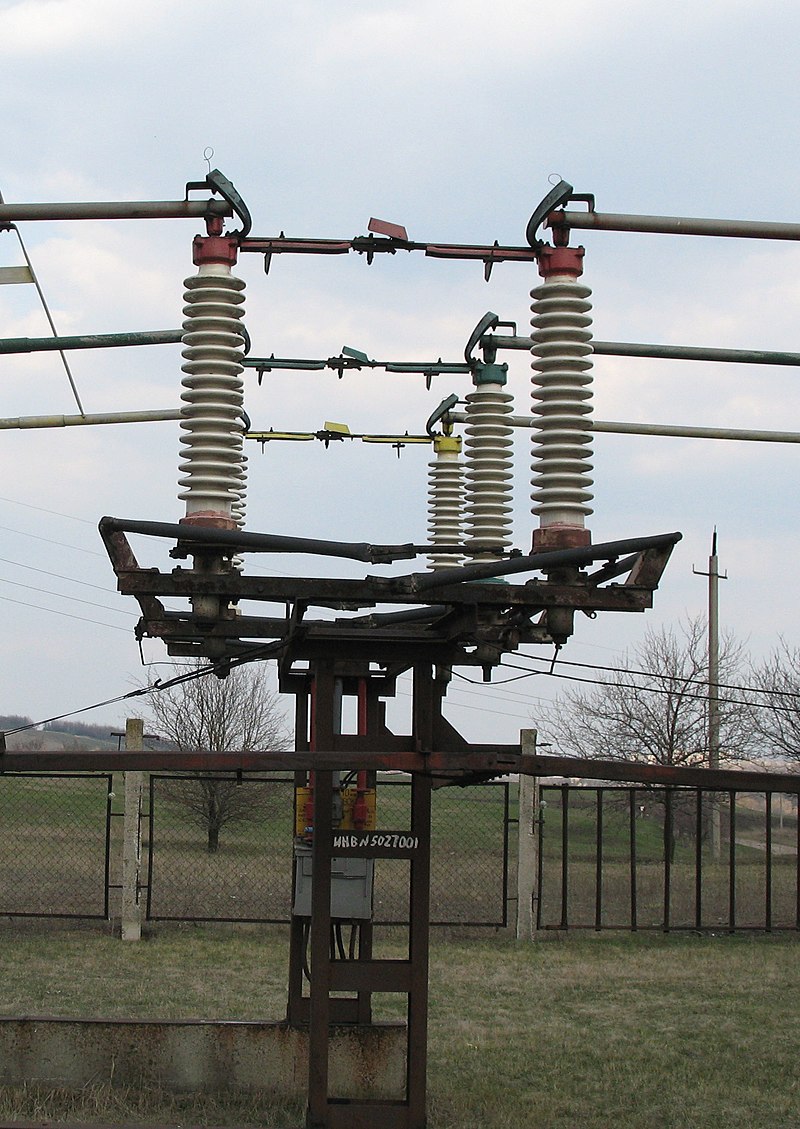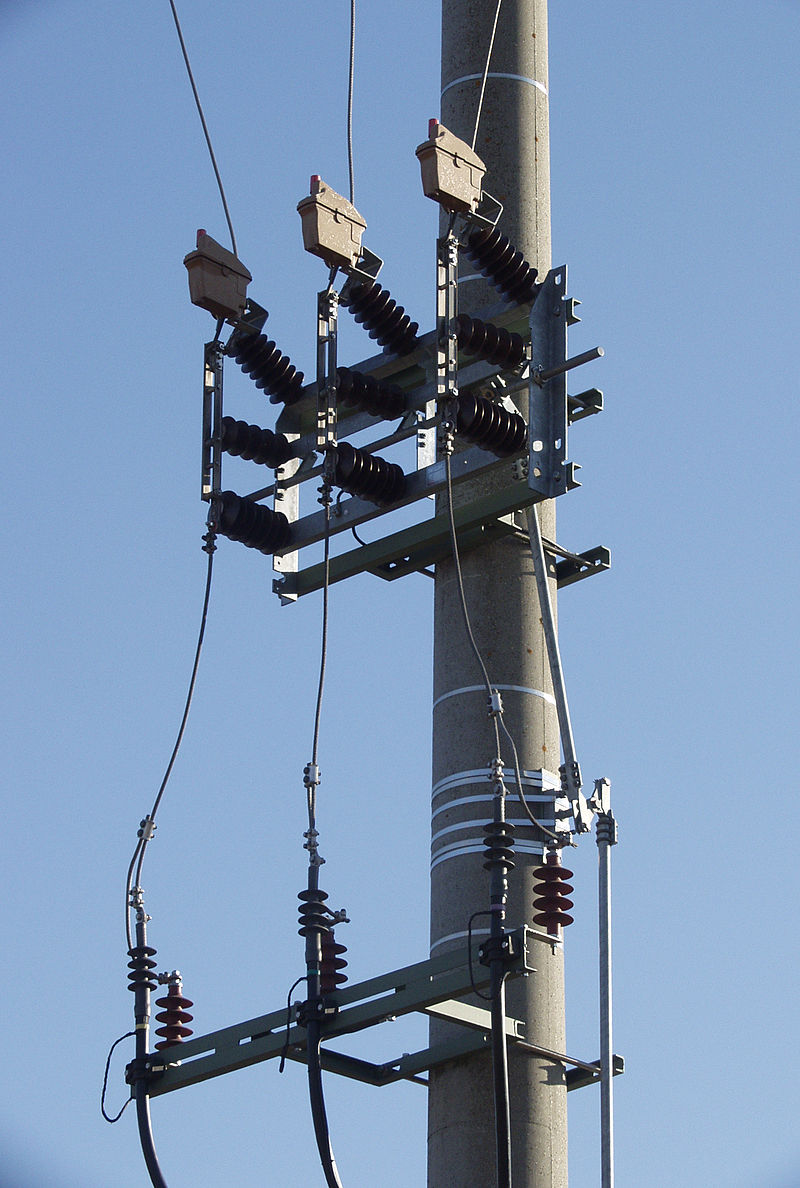
High voltage disconnector
In electrical engineering, a disconnector, disconnect switch or isolator switch is used to ensure that an electrical circuit is completely de-energized for service or maintenance. Such switches are often found in electrical distribution and industrial applications, where machinery must have its source of driving power removed for adjustment or repair. High-voltage isolation switches are used in electrical substations to allow isolation of apparatus such as circuit breakers, transformers, and transmission lines, for maintenance. The disconnector is usually not intended for normal control of the circuit, but only for safety isolation. Disconnectors can be operated either manually or automatically.
Disconnectors for medium voltage
Unlike load switches and circuit breakers, disconnectors lack a mechanism for suppression of electric arcs, which occurs when conductors carrying high currents are electrically interrupted. Thus, they are off-load devices, intended to be opened only after current has been interrupted by some other control device. Safety regulations of the utility must prevent any attempt to open the disconnector while it supplies a circuit. Standards in some countries for safety may require either local motor isolators or lockable overloads (which can be padlocked).
Disconnectors have provisions for a lockout-tagout so that inadvertent operation is not possible. In high-voltage or complex systems, these locks may be part of a trapped-key interlock system to ensure proper sequence of operation. In some designs, the isolator switch has the additional ability to earth the isolated circuit thereby providing additional safety. Such an arrangement would apply to circuits which inter-connect power distribution systems where both ends of the circuit need to be isolated.
A switch disconnector combines the properties of the disconnector and the load switch, so it provides the safety isolation function while being able to make and break nominal currents.
Integrated disconnecting switch
In a disconnecting circuit breaker the disconnectors are integrated in the breaking chamber, which eliminates the need for separate disconnectors. The intention of this combined device is to decrease maintenance and increase availability and reliability. The usage of this device instead of a disconnector is limited due to the fact that the open gap is not clearly visible and many doubts in term of safety arise during maintenance activities. Where it is adopted the earthing switch must be used and the performance must be increased by the typical value.
The open-air disconnecting switches typically need maintenance every five years (every two years under very polluted conditions), while circuit breakers have maintenance intervals of 15 years.
Source: wikipedia.org

